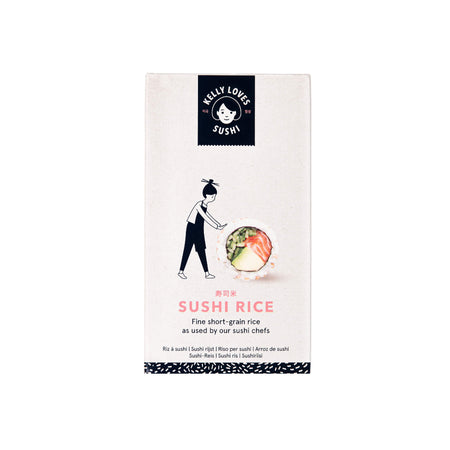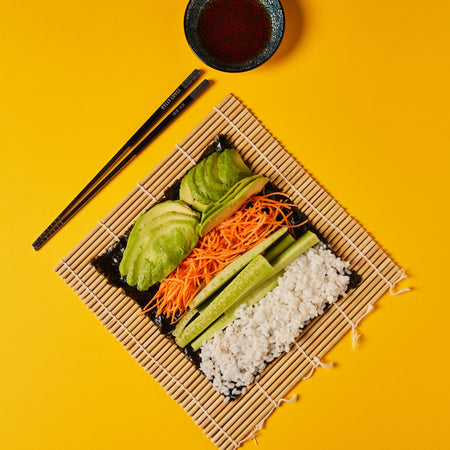Top 10 essential Korean ingredients

What are the top 10 essential Korean ingredients?
Gochugaru (hot chilli powder)
Most of the famous spiciness in Korean food comes from gochugaru, also known as: hot chilli powder, Korean chilli powder, red pepper flakes, hot pepper flakes, Korean chilli flakes, hot pepper flakes etc. Gochugaru has a bright, rich red colour and a mild to moderate spicy taste, with an added touch of sweetness. You might associate ‘chilli powder’ with the taste of cayenne pepper powder, but gochugaru is much milder when compared to other varieties of chilli powder, with a different taste. Fine chilli powder is used to make gochujang (Korean chilli paste) while coarse chilli powder is used more frequently, so it’s worth having some in stock (stored in the fridge to keep it at its best). Gochugaru is used in kimchi, numerous spicy Korean side dishes, stews and soups.
Sesame seeds (bokken chamggae)
Roasted sesame seeds are often used as a garnish and will add a nutty flavour and crunchy texture to your Korean dishes. The seeds are roasted to bring out a richer, stronger flavour. Roasted sesame seeds are used in dipping sauces and to garnish Korean vegetable side dishes such as: Korean braised potatoes (gamja jorim), Korean spinach (sigeumchi namul), Korean bean sprouts (kongnamul muchim) and spicy cucumber salad (oi muchim) as well as Spicy Korean rice cakes (tteokbokki).
Soy sauce (ganjang)
A must-have item in your cupboard, soy sauce is the go-to seasoning in most Korean dishes — it’s used more than salt! An authentic soy sauce will be flavourful, strong and full of umami. There are various types of soy sauce available in Korea, named depending on the method of brewing and the ingredients used. In Korea, they have a special soy sauce just for soup with a lighter colour and a saltier taste. Koreans will make homemade soy sauce which can be kept indefinitely in onggi (traditional Korean earthenware crocks). For your everyday Korean cooking, make sure that you use a traditional and naturally brewed soy sauce for things like stir-frying and braising.
Sesame oil (chamgireum)
Sesame oil is an amber-coloured oil which adds a mouth-watering nutty flavour and aroma to any dish. Sesame seeds are roasted, ground and then pressed to produce oil. It’s not used as a cooking oil, but rather as a flavour enhancer and a seasoning. You’ll spot sesame oil in numerous Korean recipes. It’ll be used in dipping sauces, side dishes, rice dishes and Korean BBQ. Sesame oil has been traditionally used in Korean cuisine since way back: sesame oil in Korea was first reported in the literature in the year 683 (the Shilla dynasty).
Gochujang (red chilli paste)
Gochujang or red chilli paste /Korean chilli paste is a famous Korean ingredient. It’s spicy, but also temptingly sweet. It’s made from finely ground gochugaru (Korean chilli powder), fermented soybeans, glutinous rice and salt. Many Korean foods are spicy so gochujang is a common Korean ingredient. Gochujang is used in Korean main dishes such as kimchi udon, side dishes, marinades, soups and stews. As well as the standard gochujang there are also many different types of gochujang including: beef-seasoned gochujang, less spicy gochujang and extra spicy gochujang.
Rice wine vinegar (mirim)
Rice wine vinegar (mirim), also known as cooking wine, is another basic Korean ingredient. Mirim is used to enhance the flavour of Korean dishes. The alcohol in the rice wine vinegar helps to bring out the flavour. It is often used in meat and fish marinades, helping to remove odours and tenderise. This works well for Korean BBQ and in dishes such as kalbi and bulgogi. Mirim is similar to sake, but often with a higher level of sugar and a lower level of alcohol.
Kimchi
Kimchi is at the heart of Korean cooking. It is often eaten daily in Korea; it's a staple side dish that is stored in large batches so that it’s always ready to use in a Korean kitchen. Many Koreans have a separate fridge dedicated to making it! Not only is it utterly addictive due to its savoury, fiery, sour, salty and slightly fizzy taste, but kimchi has a whole host of benefits. Kimchi is an essential ingredient because not only can you enjoy eating it on its own, but there are so many different ways to eat kimchi. In Korean cooking, it can be added to stir-frys, noodles, rice dishes or soups and stews. Kimchi jjigae (Kimchi stew) is one of the most loved kimchi dishes for its distinctive kimchi flavour.
There are also numerous different types of kimchi to try. The most popular kimchi includes baechu kimchi (made with napa cabbage), oi kimchi (made with cucumber) and kkakdugi (made with radish)...once you start tasting you’ll want to try them all!
Short-grain rice
Short-grain rice is a basic ingredient in Korean food. The grains are shorter and plumper than long-grain rice and slightly sweet and sticky once cooked. The same sticky short-grain rice is used for kimbap and sushi. In Korean cooking, short-grain rice can be used as part of the dish or as an accompaniment.
Short-grain rice is used to make one of the most popular Korean dishes besides kimchi and bulgogi: bibimbap. Bibim means ‘mixed’ and bap means ‘cooked rice’. The short-grain rice is mixed with ingredients such as soy sauce, gochujang, vegetables and sliced beef. The pièce de résistance is a raw egg on top which cooks as it mixes with the steaming rice.
Dried seaweed (nori)
Nori is a must-have ingredient when cooking Korean food as there are so many different ways of eating nori that you’ll often have to re-stock! Nori is a type of seaweed which is produced in huge quantities in Korea. It is then harvested and dried into nori sheets. Nori is used for making kimbap, but it’s also used as a side dish, snack or garnish in soup or stir-fried rice.
We hope you’ve enjoyed our whistle-stop tour of common ingredients in Korean food. Although there aren’t large numbers of Korean restaurants in the UK (...yet!), you can experience Korean home-cooked food whenever you like using authentic Korean ingredients from Kelly Loves. Professional chefs use Kelly Loves ingredients — you know you are using the best.
So when you are craving some kimchi (24/7 are we right?!), aromatic bibimbap, bulgogi, tteokbokki or some mouth-watering Korean fried chicken, prepare something using fresh and authentic ingredients at home. By stocking up on the top 10 essential Korean ingredients, you can plan meals accordingly, making sure that your weeks are full of vibrant dishes, with no wastage.









